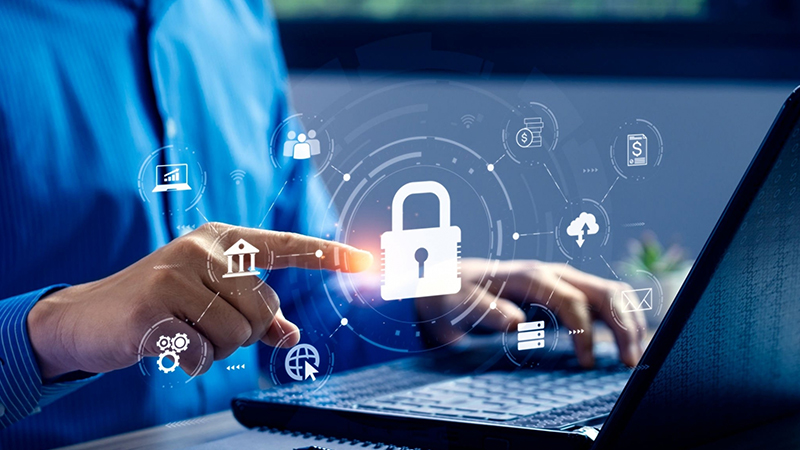Stranger – Danger is a phrase that everyone has been acquainted with since childhood, and now this has become the latest catchphrase in cyberspace.
The rate of cybercrime is increasing at a breakneck pace, and it is expected to reach its peak. According to cybersecurity stats, cybercrime affects the security of more than 80% of businesses throughout the world today. The reason behind this is a rapid shift towards hybrid and remote culture, due to which employees find it comfortable to work from different locations than the server. It is mainly due to the limited capabilities of authorities in monitoring the devices that access the server, which leads to easier cyber crime commitment in the virtual world.
Since the world wide web came into existence, the globe has seen the adoption of VPNs at a massive scale; however, currently, according to a leading VPN alternative solution provider,VPN Risk Report 2022, “Seven out of 10 companies are concerned that virtual private networks (VPNs) are becoming a major threat to their businesses and nearly half (44%) of information technology (IT) professionals have seen an increase in increase in exploits targeting their virtual private networks (VPNs) since adopting remote or hybrid work in the last one year.”
A Virtual Private Network is a security solution that helps to establish a secure and protected network connection while using a public network. It encrypts the data that travels through the network and hides the user identity. However, traditional VPNs don’t meet the needs of modern organizations, as it requires a third-party Human-machine Interface (HMI), embedded or PC-based, to provide widgets and data logging services to configure remote access devices. VPN solution infrastructure was developed for perimeter-based security; cyber attacks have increased due to exposing users’ IPs to external networks, which can be accessed through malicious means. Additionally, security remains a major concern with VPN access. VPN provides access to the entire network, which is excessive access required by a user. The whole network can be compromised if a user’s credentials get compromised. There can be latency and frequent disconnection issues with VPN if the user, VPN server, and corporate DC are at large distances apart, leading to poor user experience. Legacy VPNs are hardware-based, which can cause scalability issues.
Zero Trust addresses the challenges legacy VPN solutions pose with the strategic initiative ensuring that any user or device is to be trusted without continuous verification and authenticated before granting access to corporate resources on a “Need to Know Basis”. It is a cloud-delivered solution that is easy to deploy and scale. Businesses can adopt a granular access control policy and manage their entire secure access mechanism of user groups and internal or third-party consultants. It is possible to frame a security framework for BYOD policy with a Zero Trust solution. This strengthens the security further that
We can strengthen security further by including access management as the core of the Zero Trust architecture to create a Zero Trust extended ecosystem. A zero-trust network also includes a combination of microsegmentation and granular access control that comes along with an identity-based access security mechanism. With the amalgamation of Microsegmentation, Authentication, and constant monitoring and visibility over network traffic, companies can have unheard of control over who accesses what. This promotes effective monitoring and control on the part of the IT team and administrators as it helps them to understand and get hold of what is happening in the network and without engaging in those time-consuming investigations. It also helps to consistently lay down access policy rules in the important places of the network.
The zero-trust approach is a significant departure from traditional network security, which is why it is based on four core principles.
- Authentication before access: Every user and their devices need to be verified before granting access to resources. Additional layers of security, such as Multi-factor authentication (MFA) and Single Sign On (SSO), need to be implemented.
- Granular Access Controls: Least privilege access for users to applications and services on a need-to-know basis. Minimal access to be given is required to perform the task. Once a task is completed, access is re-evaluated.
- Continuous Monitoring of Network and Device Behaviour: Zero Trust’s primary principle is “Never Trust, Always Verify”. Assume no trust in any users or devices and go through a strict verification process before accessing the networks. Continuous monitoring of users and devices in case of any behavior or parameter change after access is granted.
- Threat Intelligence and Alerts: Processing and maintaining detailed log information of user, device and network activity to detect unusual behavior and send alerts to administrators.
As per Gartner, the Zero Trust market will reach around 65 Billion USD by the year 2027, and 26% of growth will originate from Asia. Zero Trust market will see higher growth among broader cyber security markets and solutions. Gartner also predicts that by 2025, 80% of enterprises will adopt Zero Trust solutions replacing legacy VPN solutions.” Even though we have come a long way already, innovations still lie ahead of us. The rollout of 5G networks will unlock tremendous opportunities across several industries, including healthcare, telecom, consumer durable, AI and the Internet of Things (IoT); it could also expose vulnerabilities of a hyper-connected environment leading to issues such as online fraud, data, breach, identity theft and ransomware attacks.
In this world of sharing information and collaboration, organizations need to step up their security game to leverage the huge potential it offers successfully. Factors like superior built-in cyber protection, network infrastructure, governance, employee expertise (skills) and a comprehensive cybersecurity strategy can help businesses ensure 5G adoption with great ease and finesse. The road to Zero-Trust will be different for every organization and adopting these key tenets will be a journey. The transformation for zero trust will require an understanding of the associative mechanism as well as a thorough assessment of the organizational readiness, business benefits and capabilities needed to maximize the operational outcome.


